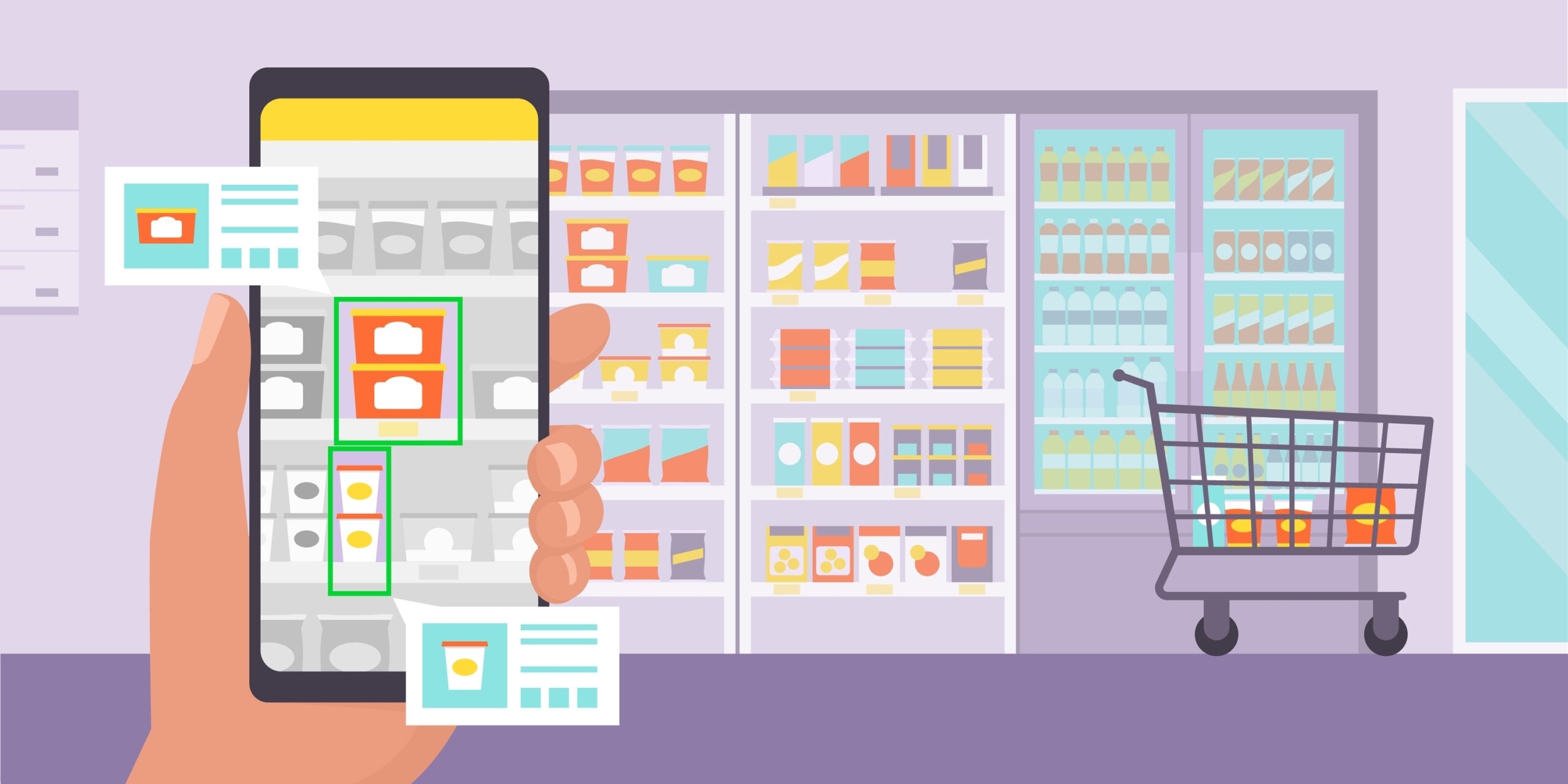Data and analytics have become essential tools for brands and retailers seeking to optimize their in-store merchandising strategies. With accurate shopper insight data, retail professionals can make data-backed decisions that enhance the shopping experience, drive sales, and improve overall business performance. Traditionally, visual merchandising and retail layout design have been executed through subjective observations and manual processes. While this method has been accepted for much of retail history, it can also lead to inefficiencies and missed opportunities. To solve these problems, retailers are turning to data-driven strategies and 3D merchandising.
Picture a world where retailers can step into a virtual representation of their store, exploring different product placements, store layouts, and shopper behavior scenarios in a highly realistic and interactive manner. 3D simulation technology offers precisely that, providing retailers and with a powerful tool to visualize, test, and optimize their merchandising strategies before implementation.
The power of 3D simulation technology
3D simulation technology has ushered in an era of possibilities for the retail industry, particularly visual merchandising. By leveraging virtual reality (VR) environments, retailers can now create lifelike simulations of their store layouts and product displays, offering various benefits that can transform how retailers operate and engage with their customers. Here are four benefits of 3D simulation technology:
1. Cost and time savings
3D models eliminate the need for physical materials by facilitating virtual tests and refining visual merchandising strategies. This reduces costs associated with physical prototypes and speeds up designing and implementing displays.
Additionally, the ability to rapidly iterate and experiment with different layouts, product placements, and shelving options in a virtual environment significantly reduces the time required for trial and error in the physical store. Retail teams can quickly assess the effectiveness of various merchandising strategies without disrupting the in-store experience or incurring additional expenses.
This streamlined process saves time and money, and enables quick responses to market trends and customer preferences, gaining a competitive edge in the ever-evolving retail landscape.
2. Increased flexibility
3D visuals offer unparalleled flexibility in creating and modifying store layouts and product displays. Retailers can experiment with different configurations, placements, and aesthetics without the limitations of physical constraints. This flexibility allows for rapid iterations and enables retailers to quickly adapt to changing market trends and customer preferences.
3. Enhanced visual representation
With 3D design, retailers and brands can create highly realistic and immersive visual models of their stores. Every detail can be meticulously crafted to create the desired ambiance and effectively showcase products. This heightened visual representation helps enable captivating and memorable in-store experiences that resonate with customers and drive engagement.
4. Improved in-store promotion
Retailers can experiment with different signage, displays, and promotional materials to determine the most effective ways to attract customers and boost sales. This data-driven approach to in-store promotion allows retailers to make informed decisions based on performance metrics gathered from the virtual simulations.
Moreover, the ability to visualize and iterate on promotional strategies in a virtual setting allows retailers to fine-tune their campaigns before implementing them in the physical store. This minimizes the risk of ineffective or costly promotions, as retailers can identify and address potential issues beforehand.
By leveraging shopper insight data collected during the 3D simulation process, retailers can optimize their in-store promotions, ensuring maximum impact and return on investment. Ultimately, this data-driven approach leads to more impactful and successful in-store promotions, fostering increased customer engagement and driving overall business growth.
Navigating in-store product merchandising in a virtual reality environment
Optimizing product placements, displays, and retail store layouts in the physical world can be challenging for brands and retailers. There are limited spaces, various factors to consider, and a need to balance aesthetics with sales performance. Fortunately, with advanced merchandising software, retail teams can create high-quality virtual stores that accurately mimic their physical counterparts. In this virtual reality environment, they can test and iterate various merchandising strategies before implementing them in the real world.
One of the most significant advantages of using 3D simulations is the ability to visualize and analyze the impact of different product arrangements, signage, and shelving options on shopper behavior. Brands can experiment with different layouts and observe how customers navigate the virtual store. They can see which product placements attract more attention, which displays encourage higher sales, and how shoppers interact with different signage.
This virtual testing ground allows retail teams to fine-tune their merchandising strategies to maximize their effectiveness. They can make data-backed decisions based on the insights gained from analyzing virtual shopper behavior. It’s not quite like having a crystal ball that shows you the future performance of your merchandising efforts, but it’s about as close as you can get.
Shopper insight data: The key to success in retail merchandising
Shopper insight data provides valuable information about shopper behavior, preferences, and purchasing patterns. Retailers can collect such data using 3D planograms that mimic the retail store environment and allow for observing and analyzing shopper engagement. Here are some key data points collected during these simulations and their significance in understanding shopper behavior:
- Eye-tracking data: By tracking the movement of shoppers’ gaze, retailers can identify which products or displays attract the most attention. This information helps in optimizing product placement and designing effective visual merchandising strategies.
- Heat maps visually represent the areas within the store that receive the most foot traffic. They indicate the hotspots where shoppers spend more time, helping retailers identify prime locations for high-demand products or promotional displays.
- Dwell times measure how long shoppers spend in specific areas or in front of particular products. Longer dwell times suggest a higher level of interest, enabling retailers to understand which products or sections are more appealing and potentially influencing purchasing decisions.
- Shopper behavior insights: Observing how shoppers navigate the store, interact with products, or engage with staff provides valuable insights into their preferences and decision-making processes. This data helps retailers optimize store layouts, improve signage, and enhance customer experiences.
- Path tracking: Tracking the paths shoppers take within the retail space helps retailers understand the flow of foot traffic and identify potential bottlenecks or areas of congestion. This information aids in improving store layouts and optimizing product placement to enhance the shopping experience.
- Purchase patterns: By analyzing the products that shoppers interact with or purchase, retailers can gain valuable insights into buying patterns. This data allows for inventory optimization, targeted promotions, and personalized marketing strategies.
With this information, retailers can make data-driven decisions to optimize store layouts, improve product placement, enhance visual merchandising, and ultimately increase customer satisfaction and sales.
Leveraging shopper insight data for optimization
Retail businesses can effectively analyze large volumes of shopper data through data analytics and machine learning algorithms to gain valuable insights and well-informed decisions. Here are a few examples of how retailers have successfully used shopper insight data to improve store plans, product placements, and promotional strategies:
1. Target’s pregnancy prediction model
Target developed a pregnancy prediction model using customer data analysis. They identified specific products that pregnant women commonly bought by analyzing purchasing patterns.
Target then adjusted its in-store layouts and promotional strategies to target expectant mothers. For instance, they strategically placed baby-related products near pregnancy test kits and customized promotional offers based on predicted due dates.
2. Amazon
As an e-commerce giant, Amazon heavily relies on data analytics to optimize product placements and promotional strategies. By analyzing customer browsing and purchasing patterns, search queries, and reviews, Amazon personalizes product recommendations for each user.
They strategically position products on their website based on data-driven insights, improving conversion rates. Furthermore, they run targeted email campaigns, suggesting products based on individual customer preferences and browsing history.
3. Sephora’s virtual artist app
Sephora, a renowned beauty retailer, developed the Virtual Artist app to enhance the in-store shopping experience. The app uses augmented reality to allow customers to virtually try on makeup products using their smartphones or in-store devices.
By analyzing user interactions and preferences, Sephora gained valuable insights into which products were most popular and how customers responded to different shades and finishes. This data guided them in optimizing their product placements, highlighting popular items, and tailoring promotional strategies.
Start investing in data-driven retail with InContext solutions
As the retail industry continues to evolve, staying ahead of the curve is essential for success. Take your business to the next level with the transformative power of data-driven strategies and cutting-edge 3D merchandising. Embrace these innovative approaches to unlock valuable shopper insights and create extraordinary in-store experiences.
But how do you get started? At InContext Solutions, our technology empowers you to unlock valuable shopper insights and create extraordinary in-store experiences. Contact us today and discover how we can help you invest in 3D merchandising with data-driven insights.





